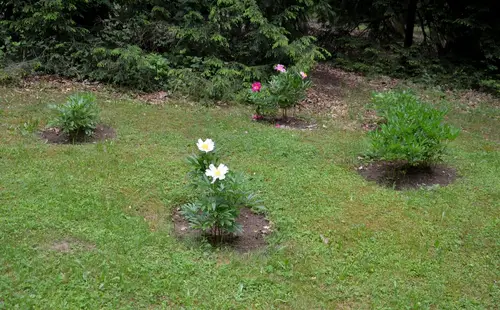Permeable soil is essential for plant growth and development. It allows water to drain through the soil and reach the roots, providing plants with the necessary moisture and nutrients. Understanding why is permeable soil best for plants is crucial for gardeners and farmers alike, as it can significantly impact the success of their crops.
Soil permeability refers to the ability of soil to transmit air and water through its pores. Different soil types have varying degrees of permeability, which can be influenced by several factors, such as soil structure, texture, and the amount of organic matter present.
Permeable soils are best for plants that require a lot of drainage, as water flows through them easily, preventing waterlogging and root rot.
The role of soil structure and texture in soil permeability cannot be overstated. Soil with a loose, crumbly structure and a high proportion of sand and gravel tends to be more permeable than soil with a compacted structure and a high proportion of clay.
The latter can become waterlogged easily, which can lead to poor plant growth and disease. Soil testing and amendments can help improve soil permeability, ensuring that plants have the necessary conditions to thrive.
Key Takeaways
- Permeable soil is essential for plant growth and development.
- Soil structure and texture play a significant role in soil permeability.
- Soil testing and amendments can help improve soil permeability.
Check out these other popular posts:
- Why Is My ZZ Plant Falling Over?
- Why Is My Snake Plant Growing Sideways?
- Why Is My Snake Plant Getting Soft?
Understanding Soil Permeability
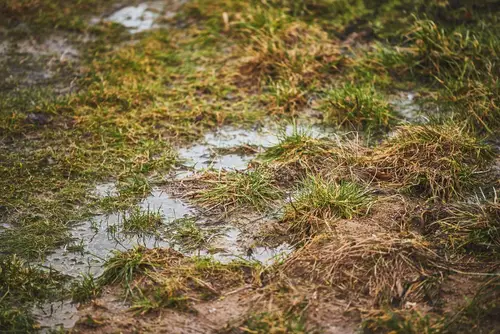
The Concept of Permeability
Soil permeability is the ability of soil to transmit water or air through its pores. It is an important characteristic of soil that affects the growth and health of plants. Soil permeability is influenced by several factors, including soil texture, structure, and the amount of organic matter present.
Permeability is measured in terms of the rate at which water or air can move through the soil. Sandy soils are generally more permeable than clay soils because they have larger pore spaces that allow water and air to move through more easily. In contrast, clay soils have smaller pore spaces that restrict the movement of water and air.
Importance of Soil Permeability
Soil permeability is important for plant growth because it affects the availability of water and nutrients in the soil. When soil is permeable, water can move through it easily, which ensures that plant roots have access to the water they need. This is especially important during dry periods when water is scarce.
Permeable soil also allows air to move through it, which is important for root respiration. When soil is compacted or has poor permeability, the roots may not be able to get enough oxygen, which can lead to root damage or death.
In addition to affecting plant growth, soil permeability is also important for managing water resources. Soils with high permeability can help prevent flooding by allowing water to move through them quickly. On the other hand, soils with low permeability can cause water to accumulate on the surface, leading to flooding and soil erosion.
Soil Types and Their Permeability
Soil permeability is the ability of soil to transmit water or air through its pores. Different soil types have different permeabilities, which can affect plant growth. Here are the permeability characteristics of different soil types:
1. Clay Soil
Clay soil has the smallest pores, which makes it less permeable than other soil types. It has a high water-holding capacity, but poor drainage. This can lead to waterlogging, which can cause root rot and other problems for plants.
2. Sandy Soil

Sandy soil has large pores, which makes it highly permeable. It drains quickly, which can be a problem for plants that require a lot of water. Sandy soil also has a low water-holding capacity, which means it dries out quickly and can lead to drought stress.
3. Silty Soil
Silty soil has medium-sized pores and is moderately permeable. It has a good water-holding capacity and drains well. Silty soil is often fertile and can be good for plant growth.
4. Loamy Soil
Loamy soil is a mixture of sand, silt, and clay, which gives it a balanced pore size and good permeability. It has a good water-holding capacity and drains well. Loamy soil is often considered the best soil type for plant growth.
5. Gravel Soil
Gravel soil has very large pores, which makes it highly permeable. It drains quickly, which can be a problem for plants that require a lot of water. Gravel soil also has a low water-holding capacity, which means it dries out quickly and can lead to drought stress.
Role of Soil Structure and Texture
Understanding Soil Structure
Soil structure refers to how soil particles are arranged and held together. The structure of soil is influenced by factors such as soil texture, particle size, organic matter content, and soil compaction. Soil structure is important for plant growth because it affects water and nutrient availability, soil aeration, and root penetration.
Good soil structure is characterized by the presence of spaces or pores between soil particles, which allow for the movement of air, water, and nutrients. These spaces also provide room for roots to grow and expand.
In contrast, poor soil structure is characterized by compacted soil particles that are tightly packed together, leaving little room for air and water to circulate, which can lead to root suffocation and poor plant growth.
Influence of Soil Texture
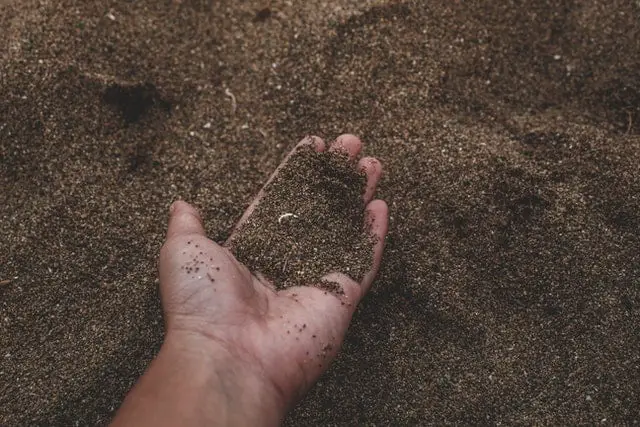
Soil texture is another important factor that influences soil structure and plant growth. Soil texture refers to the relative proportions of sand, silt, and clay particles in the soil.
Sandy soils have larger particles and tend to have larger pore spaces, which allow water to move through the soil quickly. However, sandy soils also tend to dry out quickly and have low nutrient-holding capacity.
In contrast, clay soils have smaller particles and tend to have smaller pore spaces, which can lead to poor drainage and soil compaction. However, clay soils also tend to have high nutrient-holding capacity.
The ideal soil texture for plant growth is a loamy soil, which is a mixture of sand, silt, and clay particles. Loamy soils have a balance of pore spaces and nutrient-holding capacity, which allows for good water and nutrient retention, as well as good drainage.
Water Drainage and Soil Permeability
How Permeable Soil Affects Drainage
Permeable soil is the best type of soil for plants that require good drainage. Soil permeability refers to the ability of soil to transmit air or water through its pores.
Soil texture, structure, cracking, and the amount of organic matter influence the permeability. Permeable soil allows water to flow through it, which prevents waterlogging and the formation of stagnant pools that can harm plant roots.
When soil is not permeable, water does not drain well, and the soil becomes waterlogged. Waterlogging can cause a lack of oxygen in the soil, which can harm plant roots. In addition, when water pools on top of the soil, it can create a breeding ground for pests and diseases that can harm the plants.
Impact of Water Table on Soil Permeability
The water table is the level below which the ground is saturated with water. The depth of the water table can have a significant impact on soil permeability. When the water table is high, the soil is often saturated, which reduces its permeability. This can lead to waterlogging and other problems that can harm plants.
On the other hand, when the water table is low, the soil is often drier, which can increase its permeability. This can be beneficial for plants that require good drainage. However, if the water table is too low, the soil may become too dry, which can harm the plants.
Soil Aeration and Plant Growth
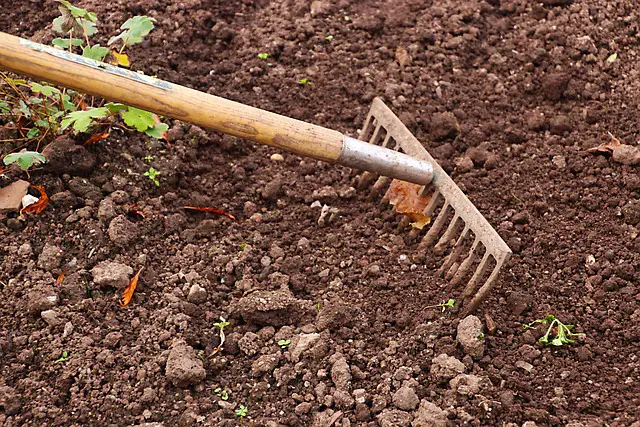
Benefits of Soil Aeration
Soil aeration is the process of creating airspaces in the soil to allow for better oxygen and water movement. This is important for plant growth because roots need oxygen to function properly. When soil is compacted, there is less room for air to circulate, which can lead to root suffocation and decreased plant growth.
Permeable soil is best for plants because it allows for better soil aeration. The benefits of soil aeration include improved water retention, increased nutrient uptake, and better overall plant health.
When soil is properly aerated, it can hold onto water for longer periods of time, which means that plants have access to water even during dry spells. Additionally, when soil is aerated, it allows for better nutrient absorption, which is essential for plant growth.
Link Between Soil Aeration and Plant Growth
There is a direct link between soil aeration and plant growth. When soil is compacted, it can lead to poor plant growth and decreased yields. This is because compacted soil can restrict root growth, which can lead to poor nutrient uptake and less water retention.
When roots are not able to grow properly, plants are more susceptible to disease and pests.
Soil aeration is also important for the overall health of the soil. When soil is properly aerated, it allows for beneficial microorganisms to thrive.
These microorganisms are essential for breaking down organic matter and releasing nutrients into the soil. This helps to create a healthy soil ecosystem, which can lead to better plant growth and increased yields.
Organic Matter and Soil Permeability
Role of Organic Matter
Organic matter plays a crucial role in soil permeability. It helps to improve the soil structure and texture, which in turn enhances the soil’s ability to hold water and air.
Organic matter also provides a food source for soil organisms, which are essential for maintaining a healthy soil ecosystem. The presence of soil organisms helps to break down organic matter, releasing nutrients that are essential for plant growth.
Improving Soil Permeability with Organic Material
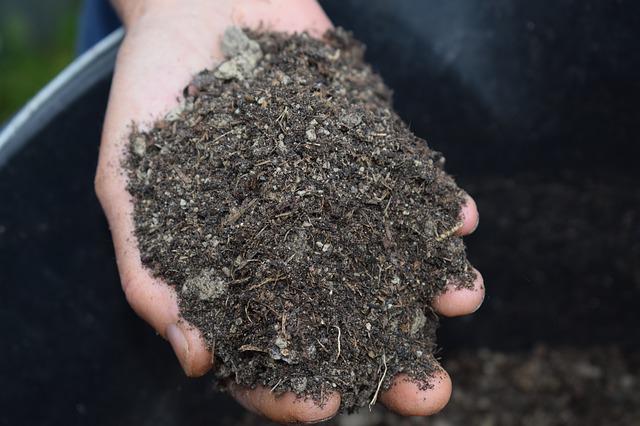
Adding organic material to soil can significantly improve its permeability. Soil amendments, such as compost and manure, are excellent sources of organic material that can be added to soil to improve its structure and texture.
Compost is made by decomposing organic matter, such as leaves, grass clippings, and food scraps, into a nutrient-rich material that can be added to soil. Manure is another excellent source of organic material that can be added to soil to improve its structure and texture.
When adding organic material to soil, it is essential to mix it thoroughly to ensure that it is evenly distributed throughout the soil. This will help to improve the soil’s ability to hold water and air, which is essential for healthy plant growth.
It is also important to note that adding too much organic material to soil can have the opposite effect, reducing the soil’s permeability and making it difficult for water and air to penetrate.
Soil Testing and Amendments
Importance of Soil Testing
Before planting anything, it’s essential to test the soil to determine its pH level and nutrient content. Soil pH is a measurement of how acidic or alkaline the soil is and is crucial to plant growth. Most plants prefer a pH level between 6 and 7.5, but some plants require a specific pH level to thrive.
A soil test will also reveal the nutrient content of the soil, including nitrogen, phosphorus, and potassium, which are essential for plant growth. If the soil is deficient in any of these nutrients, the plants may not grow as well as they could.
Choosing the Right Soil Amendments
Once the soil test results are in, it’s time to choose the right soil amendments. Soil amendments are materials added to the soil to improve its physical properties, such as water retention, permeability, and aeration.
One common soil amendment is sulfur, which is used to lower the soil’s pH level if it’s too alkaline. If the soil is deficient in nutrients, fertilizer may be added to provide the necessary nutrients for plant growth.
Another popular soil amendment is compost, which adds organic matter to the soil and improves its structure and water-holding capacity. Peat moss, vermiculite, and perlite are also commonly used as soil amendments to improve soil texture and aeration.
It’s important to choose the right soil amendments based on the soil test results and the specific needs of the plants being grown. Adding too much of any amendment can be harmful to plant growth and may even damage the soil.
Frequently Asked Questions
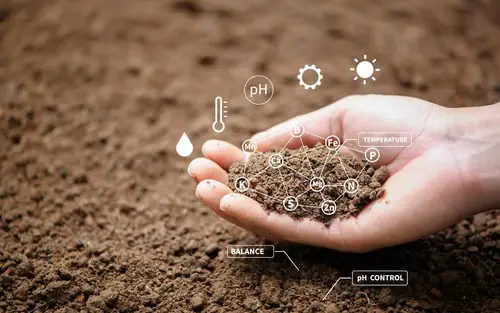
Which layer will become saturated first when rain falls?
When it rains, the topsoil layer will become saturated first. This is because it is the layer closest to the surface and has the most direct exposure to the rainwater. The topsoil layer is also typically more permeable than the layers below it, which allows water to move through it more easily.
What most likely happens if water flows through a permeable soil layer and reaches a clay layer?
If water flows through a permeable soil layer and reaches a clay layer, it will most likely pool on top of the clay layer. This is because clay is less permeable than other soil types and does not allow water to move through it as easily.
As a result, water can accumulate on top of the clay layer, leading to waterlogging and potentially damaging plant roots.
Which statement best describes a spring?
A spring is a natural source of water that flows from the ground. It occurs when groundwater is forced to the surface by pressure from an underground aquifer. Springs can be found in various locations, including hillsides, valleys, and along the banks of rivers.
The image shows groundwater zones which number represents the water table?
The water table is represented by zone 3 in the image of the groundwater zones. The water table is the level at which the ground becomes saturated with water and is typically located below the surface of the earth.
Which term describes feature A in the image of the water feature?
Feature A in the image of the water feature is known as a well. A well is a man-made hole in the ground that is dug to access groundwater. It is typically lined with concrete or other materials to prevent the sides from collapsing.
Is permeable soil best for plants that need a lot of drainage?
Yes, permeable soil is best for plants that need a lot of drainage. Permeable soil allows water to move through it more easily, which helps to prevent waterlogging and ensures that plant roots have access to oxygen.
Plants that require good drainage include cacti, succulents, and many herbs.

Hey, I’m Lisa and I’ve been an avid gardener for over 30 years. I love writing, talking and living in the garden! Feel free to connect with me on my socials below

